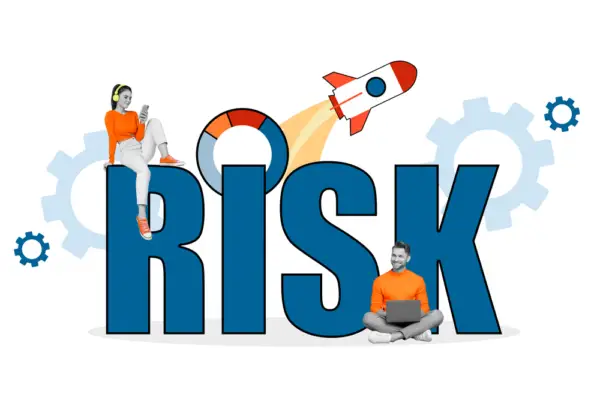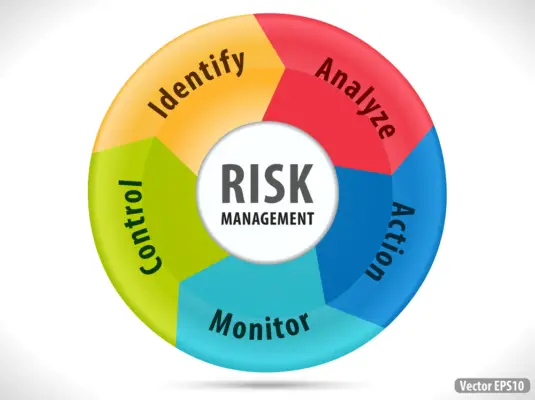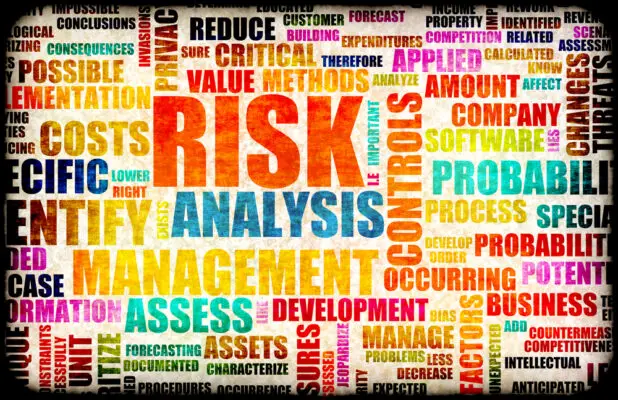Residual risk is the potential risk that remains after all possible measures have been taken to reduce or eliminate the initial risk. Understanding and managing residual risks is important because they can lead to unexpected consequences and may result in significant losses.
Identifying residual risks is an important component of risk management. It requires an in-depth analysis of the potential risks associated with a particular activity or project.
The identification process involves assessing both internal and external factors that could impact the outcome of a project or activity.
Once identified, it is crucial to evaluate the likelihood and severity of each residual risk so that appropriate mitigation strategies can be developed and implemented. Organizations can minimize their exposure to potential losses by managing residual risks while pursuing their objectives.
In this article, we will explore what residual risk means, why it is important to identify them, factors contributing to residual risks, and strategies for managing them using examples from different fields.

Definition of Residual Risk
It refers to the potential risks after all mitigation techniques have been implemented and evaluated. In other words, residual risk is the level of risk that still exists even after all possible measures have been taken to reduce it.
This term is often used in risk assessment processes to evaluate the effectiveness of control measures and identify areas where further attention is needed.
Mitigation techniques are actions taken to reduce or eliminate potential risks. They are an essential part of any effective risk management strategy.
However, some residual risks will always be left over despite applying all mitigation measures. This can occur for various reasons, such as uncertainty in data or incomplete information.
Risk assessment plays a critical role in identifying and managing residual risks. It involves evaluating and measuring potential risks and determining their likelihood and impact on business operations or individuals’ well-being.
This process aims to identify potential threats and develop strategies that mitigate those risks effectively while recognizing that some residual risks may always exist regardless of the steps taken toward mitigating them.
Importance of Identifying Residual Risk
It is important to assess these risks because they could significantly impact the organization’s operations, reputation, and financial stability.
Inform Decision-Making: Understanding the residual risk helps an organization make informed decisions about whether additional action is needed to mitigate the risk further or if it is acceptable to accept the remaining risk. It’s essentially about understanding the ‘risk vs. reward’ balance.
Effective Allocation of Resources: Organizations can better allocate their resources by identifying and evaluating the residual risk. For example, areas with higher residual risks might require more attention and resources.
Compliance with Regulations: Some industries and regulatory bodies require the assessment of residual risks as part of their risk management processes.
Risk Ownership: Knowing the residual risks can help clarify who within the organization should be responsible for managing them. This individual or team, known as the risk owner, is typically responsible for monitoring the risk and taking action if it increases above an acceptable level.
Business Continuity and Planning: Residual risks can highlight areas of vulnerability in your business continuity and disaster recovery plans. By identifying these risks, you can develop more robust strategies and plans to ensure the continuity of critical business operations during a disaster or disruption.
Insurance Decisions: Residual risk can influence decisions about insurance. If the residual risk of a particular event occurring is high and the potential impact is significant, it may be worth insuring against that risk.
Stakeholder Confidence: Demonstrating that your organization identifies and manages residual risks can improve stakeholder confidence. It shows that you have a comprehensive risk management approach and are actively working to mitigate risks.
Assessing impacts is one of the reasons why identifying residual risk is important. Impacts can be positive and negative; however, focusing on negative impacts is crucial as they threaten an organization’s success.
Organizations can prioritize which ones require immediate attention by assessing the potential negative impacts of residual risks.
Additionally, assessing impacts allows for better decision-making when developing mitigation plans. Mitigation planning is another reason why identifying residual risk is essential.
Mitigation planning involves developing strategies to reduce or eliminate risks. Furthermore, by properly identifying residual risks, organizations can develop more effective mitigation plans that address multiple areas of concern rather than just one or two.
Identifying and addressing residual risk is vital in effective risk management strategies, allowing organizations to assess potential negative impacts and develop targeted mitigation plans.
Proper identification ensures that resources are allocated effectively towards mitigating specific areas of concern while providing a more comprehensive approach to reducing possible threats to an organization’s success.

Factors Contributing to Residual Risk
Inadequate risk assessment and mitigation strategies can lead to residual risk, which refers to the remaining level of risk after all planned measures are implemented. Understanding that residual risk may still threaten the organization and its stakeholders is crucial.
Inherent Risk: The inherent risk is an organization’s raw, uncontrolled risk. The greater the inherent risk, the greater the potential residual risk.
Quality of Risk Assessments: If the initial risk assessment is inaccurate or incomplete, the strategies implemented might not adequately control the risk, resulting in higher residual risk.
Effectiveness of Control Measures: The effectiveness of risk controls plays a significant role in determining the amount of residual risk. The residual risk may be higher if controls are poorly designed or implemented.
Change in External Environment: Changes in the external environment, such as market conditions, technological advancements, regulatory changes, or socio-political shifts, can increase residual risk.
Change in Internal Environment: Changes within the organization, such as new business processes, systems, or personnel, can also impact residual risk.
Risk Tolerance: The level of risk that an organization is willing to accept will affect the amount of residual risk. Organizations with a higher risk tolerance may accept a higher level of residual risk.
Budget Constraints: Limited resources or constraints may restrict an organization’s ability to implement all desired controls, resulting in higher residual risk.
Emerging Risks: Emerging risks, such as new cyber threats or evolving regulatory requirements, can contribute to residual risk.
One factor that contributes to residual risk is incomplete or inaccurate risk assessment. Risk assessment involves identifying potential hazards, evaluating their likelihood of occurring, and estimating their potential impact.
If this process is not thorough or accurate, it may fail to identify all potential risks or underestimate their severity. This could result in inadequate control measures being put in place, leaving residual risks unaddressed.
Another factor contributing to residual risk is the ineffective implementation of mitigation plans. Even if a proper risk assessment has been conducted, mitigation strategies are not properly implemented or monitored; residual risks may remain.
For example, an organization may develop a plan for managing cyber threats but fail to update it regularly with new threats and vulnerabilities as they emerge. As a result, the plan becomes outdated and ineffective at addressing current risks.
Organizations must conduct thorough and accurate assessments while implementing effective mitigation plans regularly reviewed and updated as necessary.
Strategies for Managing Residual Risk
These strategies should focus on minimizing the likelihood and impact of residual risks.
Here are three strategies that organizations can employ to mitigate and transfer residual risk.
Firstly, organizations should regularly review their risk management plans to ensure they are up-to-date and effective. This review should include identifying any new or emerging risks that could lead to residual risk, evaluating the effectiveness of existing controls, and updating mitigation plans as necessary.
Secondly, organizations can implement appropriate control measures to reduce the likelihood of residual risks occurring. This may include implementing additional security controls such as access or firewalls, training employees on proper information handling procedures, or developing contingency plans for business disruptions.
Lastly, organizations can transfer residual risk through insurance policies or other contractual arrangements with third-party vendors. This strategy is particularly useful when dealing with high-severity events that could significantly impact an organization’s financial stability or reputation.
Managing residual risks effectively requires proactive efforts from all organizational levels. It involves identifying potential gaps in current risk management practices while implementing appropriate control measures to minimize the likelihood and impact of unforeseen events.
It may also involve transferring some responsibility for mitigating unforeseen risks through contracts or insurance policies with third-party vendors—a key component in ensuring an organization’s overall resilience against unexpected events.
Examples of Residual Risk in Different Fields
One example is cybersecurity, where residual risk refers to the possibility of data breaches even after implementing security measures such as firewalls and encryption. This type of risk can be mitigated through continuous monitoring and updates to security protocols.
Another application of residual risk can be found in finance, particularly in investment management. Despite conducting thorough research and analysis before investing, there is always a chance that unexpected market conditions or events could negatively impact the investment portfolio.
To manage this residual risk, investors often diversify their investments across different asset classes and regularly review their portfolios to adjust for any changes in market conditions.
In healthcare, a residual risk can refer to the potential harm that patients may face even after receiving treatment or undergoing surgery due to factors such as medication errors or complications during recovery.
Healthcare providers mitigate this type of risk by implementing safety protocols and procedures, conducting regular training for staff members, and utilizing technology such as electronic health records to improve communication and reduce errors.

Frequently Asked Questions
How does residual risk differ from inherent risk?
Inherent risk refers to the level of risk that exists without taking any measures to mitigate it.
On the other hand, residual risk is the remaining level of risk after applying all possible controls and mitigation measures.
Residual risk can be considered as the amount of risk an organization is willing to accept or retain after implementing all necessary security measures.
The difference between inherent and residual risk is that inherent risks are identified before implementing any control measure, while residual risks are identified after implementing these measures.
What are some common misconceptions about residual risk?
One misconception is that residual risk can be eliminated entirely, which is impossible as it represents the remaining level of risk after controls have been implemented to mitigate inherent risks.
Another misunderstanding is that residual risk always decreases after implementing controls, when it can also increase due to factors such as human error or changes in the environment.
Additionally, there may be confusion between residual and secondary risks which arise from control measures.
Clarifying these misunderstandings is important for organizations to effectively manage their overall risk profile and make informed decisions regarding their mitigation strategies.
How does the identification of residual risk affect the decision-making process?
It provides valuable insights into the potential risks that may arise even after implementing various risk mitigation strategies.
An impact analysis is crucial in identifying residual risks and assessing their potential consequences. This analysis helps organizations to make informed decisions by evaluating the likelihood of occurrence, the severity of impact, and available resources for managing these risks proactively.
Moreover, it enables organizations to prioritize their efforts toward mitigating high-risk areas while allocating resources effectively.
Can residual risk ever be eliminated, or is it always present to some degree?
Risk tolerance varies between individuals and organizations, with some being more comfortable taking on higher levels of residual risk than others. Mitigating strategies can reduce the likelihood and impact of potential risks, but they cannot eliminate them entirely.
It is crucial for decision-makers to weigh the potential benefits against the inherent risks when making strategic decisions and to have contingency plans in place should unexpected events occur.
How does the concept of residual risk apply to personal risk management?
Personal risk assessment is identifying potential risks that may impact one’s life and taking necessary measures to mitigate those risks. This can include evaluating aspects of one’s life, such as health, finances, and relationships.
Mitigating risks involves implementing strategies to reduce the likelihood or impact of an adverse event.
For instance, purchasing insurance policies or creating an emergency fund can help minimize the financial risk of unexpected events such as illnesses or accidents.
Personal risk management also involves recognizing residual risks, which remain even after all possible preventive measures have been taken. While eliminating residual risks may not be possible, individuals can still mitigate them by being prepared and having contingency plans.

Conclusion
Residual risk refers to the level of risk that remains after implementing all possible risk management strategies. It is important to identify residual risks as they can pose significant threats to an organization’s objectives, assets, and reputation.
Factors contributing to residual risk include incomplete or ineffective implementation of risk management measures, changes in technology or business processes, and external factors such as economic conditions or regulatory changes.
Organizations must adopt a proactive approach to manage residual risks effectively by regularly monitoring and assessing potential threats and vulnerabilities.
Strategies for managing residual risks may include transferring the risk through insurance policies, accepting the risk if it falls within acceptable levels, mitigating the risks by implementing additional controls, reducing exposure, or avoiding the risks altogether.
Examples of residual risks can be seen in different fields, such as finance and healthcare. In finance, even after implementing various measures such as diversification of investments and regular market analysis, some unforeseen events like natural disasters might result in losses.
Similarly, in the healthcare industry, where there have been advancements in medical technologies, equipment failure can cause harm to patients. Therefore identifying and managing residual risks is crucial for any organization’s success.
A survey conducted by Deloitte on global executives from 19 countries across different industries revealed that only 13% of respondents confirmed that their organizations were highly effective at managing third-party relationships, which poses a significant threat to businesses, especially regarding cybersecurity issues.
This highlights how crucial it is for companies to focus on their internal operations and their external partnerships when identifying potential sources of residual risk.

Chris Ekai is a Risk Management expert with over 10 years of experience in the field. He has a Master’s(MSc) degree in Risk Management from University of Portsmouth and is a CPA and Finance professional. He currently works as a Content Manager at Risk Publishing, writing about Enterprise Risk Management, Business Continuity Management and Project Management.

